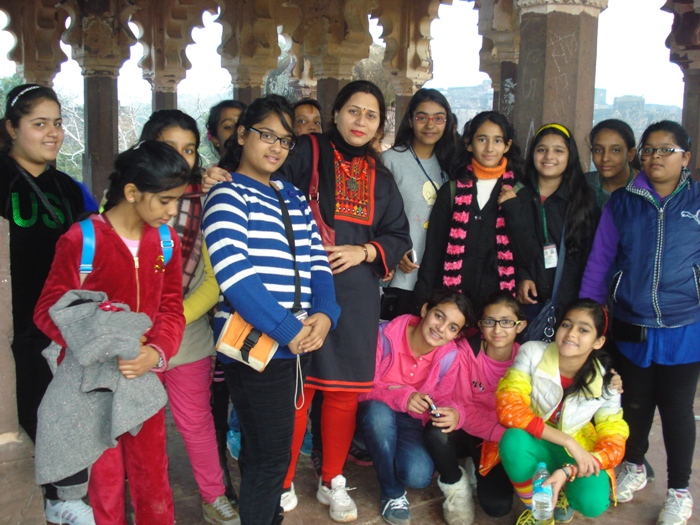Ranthambore trip
On January, 2014, at 1015 hrs, 70 students and 7 teachers of our School boarded the Dehradun Express for Sawai Madhopur. The thrill of getting a chance to sight the majestic tiger in it's natural habitat was clearly evident on each face as we assembled on Platform 1 of Nizamuddin Railway station. We were instructed to carry our sleeping bags or a heavy blanket for the overnight journey as it was expected to be a very cold night. However, no one could dream that the temperature would drop to it's lowest level that night! All the bedding that we carried seemed insufficient and we shivered the whole night without as much as even a nap!
Somehow, the hours time passed and our train reached Sawai Madhopur the next morning at 5.30. It was pitch dark. There were 4 open cantors waiting at the station to transport us to the Ankur Resort which was a 5 minutes' drive from the station. Even though we were cold thoroughly enjoyed our first ride on the cantor. We felt like Santa riding on his open sleigh on Christmas night!
After checking into the hotel, we had ample time to relax and get ready for the evening safari to the Ranthambore National Park. An experienced guide briefed everyone about the park. He explained that the National Park was located in the Sawai Madhopur district of Rajasthan. It had the world famous tiger reserve and was spread over 1334 square kilometres.
[gallery columns="2"]
We found tourists in large numbers from various parts of India and abroad to observe the tigers. There was plenty of flora and fauna in the tiger sanctuary. There are more than 300 species of trees and birds, 50 aquatic plants, 30 mammals and many reptiles including the sloth bear, wild boar, chinkara, porcupines, jackals, leopards, the Jungle Cat, the marsh crocodile, sambhar, chital, nilgai, gazelle, boars, mongoose, the Indian hare, monitor lizards and a large number of birds apart from the tigers which are the major attraction of this treasured park.
On our safari, most of us spotted the tiger. A few of us were also extremely fortunate to see the tiger in action! We saw it hunting a Sambar. It was truly the experience of a lifetime which we will cherish for a long long time.
Not content with watching the action on the videos of those who had captured the same, there was hope for those who had missed the live action! There was one more safari the next morning..
That evening there was a bonfire and a folk music and dance programme along with a power-point presentation by a ranger. We gained insight about the history of the park and also about the various species of animals found here.
On 3 January, we again set out for the safari in the morning. This time, the tiger was hardly sighted and all the cantors but one returned without luck. Alas..
Ranthambore is also a famous heritage site because of the pictorial ruins that dot the wildlife park. The visit to the Ranthambore Fort, in the afternoon, was also worth the effort of climbing a flight of 200 steps to reach it! It housed a Ganesh temple, a mosque, a Jain temple, a Shiva temple besides numerous other rooms.
In the evening we relaxed with dancing to the beats of a DJ arranged for around a bonfire. The next day, hesitatingly we boarded the Shatabdi express bringing an end to a memorable trip.
Watching the tigers roam free in verdant greenery and among a gamut of species of birds and animals, it had been an exciting adventure.













